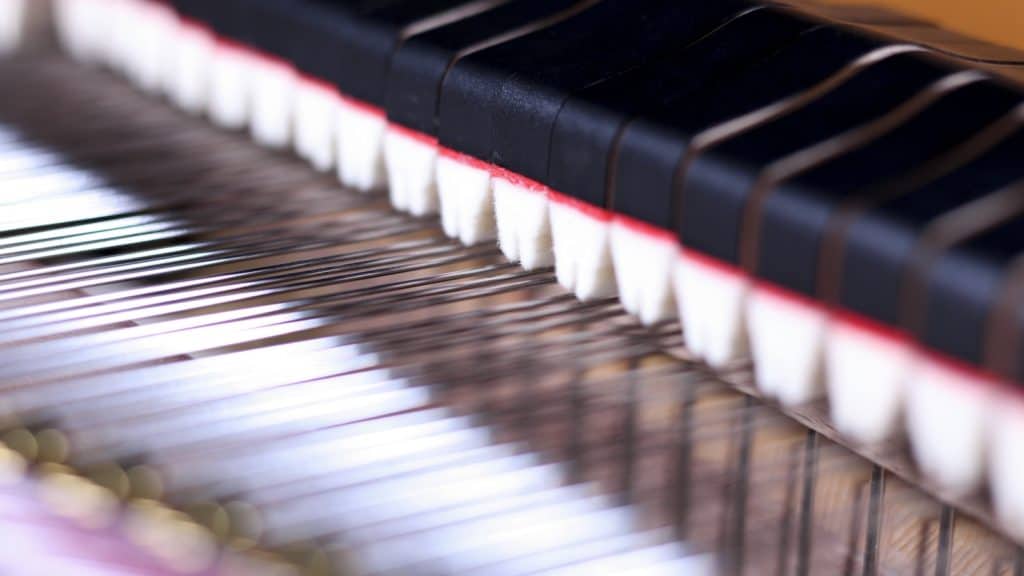Damper noise occurs when the dampers lift off the strings: As all the strings vibrate slightly, a diffuse sound becomes audible. While not a desirable sound on a grand piano, this noise is an important detail that adds authenticity to the dynamic interplay of strings and resonances.
Damper Noise – A Dynamic Sound Component
By the way, this definitely does not refer to a squeaking pedal! Such a pedal noise is absolutely undesirable and you should turn it off if possible. Instead, damper noise is a quiet, impulse-like sound that could be described as a diffuse mixture of frequencies. When the dampers lift off, all the strings vibrate a little.
Trained pianists know how to use the damper pedal and can operate it almost inaudibly. However, it is simply part of the grand piano sound and is even quite present in some recordings – a purely aesthetic decision. Accordingly, you can individually adjust the damper noise on most digital and software pianos. It is important to know that digital pianos also generate this sound dynamically. The faster you press the pedal, the louder the damper noise.
Using the Damper Pedal as a Dynamic Controller
If you are playing a software piano, you may be using a MIDI keyboard as a controller. In this case, it is not a given that an externally connected pedal will work as a continuous controller. With its wooden keys and hammer action, the Kawai VPC1 MIDI keyboard provides an authentic feel. The included triple pedal is compatible with Kawai’s MP7 and MP11 stage pianos and transmits the dynamic pedal action to allow for control of the damper noise.

